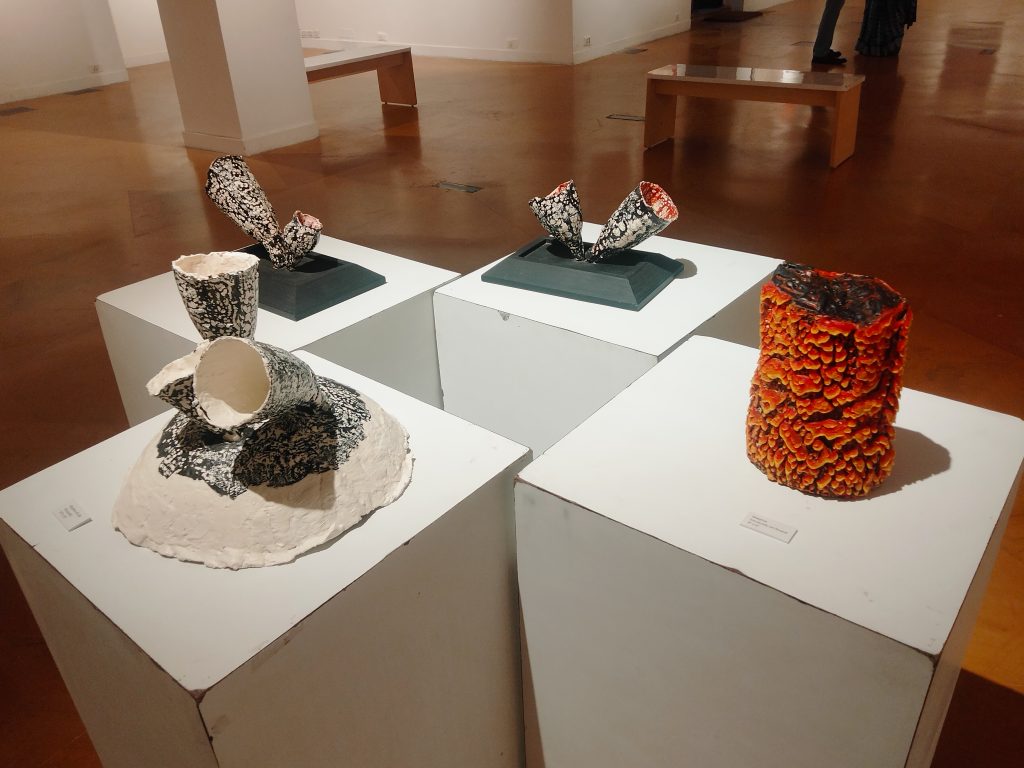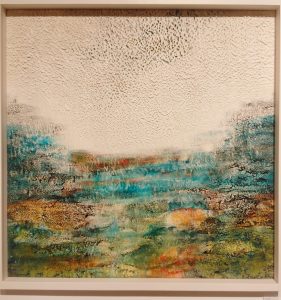Ved Prakash Bhardwaj
Through their art, an artist liberates life from its constraints. The more we learn about life as humans, the more perplexed we become. An artist attempts to clear
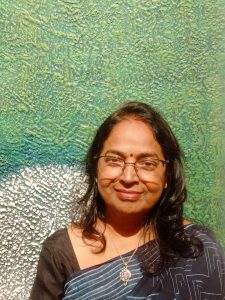
up this ambiguity in their work. In this endeavor, one attempts to reach those distant meanings of life that are beyond the scope of ordinary vision. For this, the artist moves away from visible images to create what we call abstract images. But the foundation of abstract is life itself, as we see it in various forms.
When an artist finds that these seen forms are insufficient for their expression, they attempt to look at life in a different way. In this effort, they discover unfamiliar images created by their imagination. B. Jaya Lakshmi’s art does the same thing. Understanding life and attempting to liberate life from its constraints can be seen in her art. Her solo exhibition at Delhi’s Visual Art Gallery is on view from February 22, 2023 and will run until February 28, 2023. Most of paintings are abstract in this exhibition.
Jaya Lakshmi’s art is an expression of the interactions of the experiences of the outer world. Our emotional world is shaped by the impressions that the experiences of the external world have on our minds. All our actions and interactions happen according to this sense of the world. As an artist, we express these interactions in different art forms. The paintings seems as if aesthetic peace has spread on the canvas. Creating this peace amidst the hectic living conditions of many cities including Delhi is an artist’s aspiration! She has created life on canvas as she thinks and wants. Whenever you meet Jaya, you will always find her smiling and full of enthusiasm. If this is her outer personality, then the painting is her inner personality or say the outer personality is a reflection of her inner personality.
The specialty of these 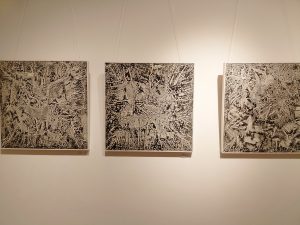 paintings is that they are Encaustic painting, one of the oldest technique of painting. In this technique, an artist works by adding colour to the wax. All the paintings are abstract, including some landscapes. She created some sculptures too. Jaya Lakshmi has so far done nine solo and several group exhibitions. Her work has been shown several times by the SFWA Gallery in San Francisco.
paintings is that they are Encaustic painting, one of the oldest technique of painting. In this technique, an artist works by adding colour to the wax. All the paintings are abstract, including some landscapes. She created some sculptures too. Jaya Lakshmi has so far done nine solo and several group exhibitions. Her work has been shown several times by the SFWA Gallery in San Francisco.
As the colours merge into each other in her paintings, so does the surge of energy is been felt in her work. On the surface, it appears complex in design but there’s a charm in this complexity. This complexity first binds the viewer and then gradually prepares the viewer to open up. Some paintings are characterised by textures whereas some with dots.
Encaustic painting is a painting technique in which colours are mixed with hot liquid bees wax. Artists can change the paint’s consistency by adding plant resin or oil (the latter for use on canvas) to the wax. After the paint has been applied to the support, which is usually made of wood, plaster, or canvas, a heating element is passed over the surface until the individual brush or spatula marks fuse into a uniform film.
Encaustic wax has many properties of oil paint: it can give a very brilliant and attractive effect and offers excellent scope for elegant and expressive brushwork. The practical difficulties of using a medium that has to be kept warm are considerable though. Apart from the greater sophistication of modern methods of heating, the present-day technique is similar to that described by the 1st-century-CE Roman scholar Pliny the Elder. Encaustic painting was invented by the ancient Greeks and was brought to the peak of its technical perfection by the genre painter Pausias in the 4th century BCE.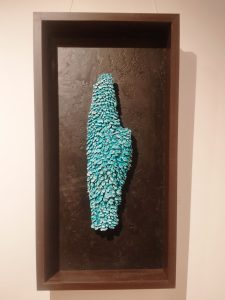
The texture that Jaya creates with wax in her paintings draws onlooker towards her. The light gives different tones of colour due to the relief on the canvas. If you look carefully at the paintings, you can see the use of two colours in one stroke. In the encaustic technique, work has to be done in many layers. In this, the artist has the facility that she can use different colours in different layers, which gives the impression of colour variation in one layer in the final painting.
Georgina Maddox writes in her catalog essay that there is a compulsion to touch its surface and that leads the artist to certain conundrums as not all artworks are to be touched even if they invite the desire to be handled. From the smooth to the textured, from the transparent to the opaque, each layer encapsulates a journey in time that actually delves into the medium and then moves beyond into an emotional and almost metaphysical space. The unique versatility of the medium is what captures the creator and the viewer and it is only when one physically experiences the artwork that one can appreciate and understand the medium in its full magnificence.
Jaya Lakshmi’s art creates abstract concepts without any particular texture. The beauty is contained in the objects present in nature at the level of texture and colour arises from the power of life. It is abstract in its structure which becomes the basis for awakening the emotion. This is the quality of Jaya’s art. Through familiar symbols and imagery, she creates a landscape on the surface that awakens aesthetic sense in the mind and changes our perspective towards life. An artist awakens aliveness and dynamism in static paintings by using positive elements present in his environment. A figurative artist creates a composition based on human figures or natural scenes from the real world. An abstract artist uses his imagination to create a picture 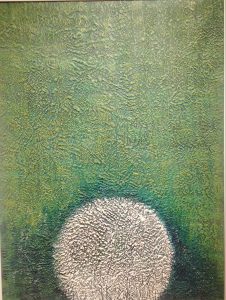 that takes the viewer into a different world. This frees the viewer to move away from the landscape of the picture into his own fantasy world. She goes as far as her imagination can take. In this work the artist and the creation act only as a medium. This is the greatest power of the artist to help the viewer to break free from their present condition. It is no wonder that visitors feel liberated looking at Jaya’s paintings. Most of these paintings do not have any clear shape or even a hint of it. In some landscapes, we find familiar images. Most of the paintings awaken our imagination. Sometimes we feel the weaves of handloom while looking at them and sometimes we feel the complications of life. Somewhere it is a symbolic expression of the obstacles of the world like the closed doors of the windows and somewhere it also awakens the possibility of the world opening up. Some of the pictures glow like blossoming flowers. Some have the impression of a landscape shrouded in fog. These images evoke the memories of the viewer on many levels.
that takes the viewer into a different world. This frees the viewer to move away from the landscape of the picture into his own fantasy world. She goes as far as her imagination can take. In this work the artist and the creation act only as a medium. This is the greatest power of the artist to help the viewer to break free from their present condition. It is no wonder that visitors feel liberated looking at Jaya’s paintings. Most of these paintings do not have any clear shape or even a hint of it. In some landscapes, we find familiar images. Most of the paintings awaken our imagination. Sometimes we feel the weaves of handloom while looking at them and sometimes we feel the complications of life. Somewhere it is a symbolic expression of the obstacles of the world like the closed doors of the windows and somewhere it also awakens the possibility of the world opening up. Some of the pictures glow like blossoming flowers. Some have the impression of a landscape shrouded in fog. These images evoke the memories of the viewer on many levels.

